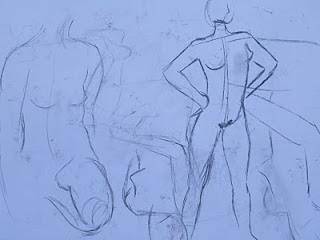My interest in textiles has never really translated into an interest in fashion. Clothes aren't something I care about in and of themselves, I'm more interested in the materials. Which is a nice way of saying that I wasn't particularly excited about this exhibition at the Fashion and Textiles Museum in Bermondsey.
I was completely wrong. Of the exhibitions on the list that I've been to so far, this was by far and away the best.
The exhibition focuses on Horrockses Fashions in their heyday, the 1940s and 1950s. Horrockses was a British firm specialising in off-the-peg women's clothing, which stopped trading in the early 1980s. They're remembered today for their brightly-patterned cotton dresses, but they also made evening dresses and housecoats, and had a children's range called Horrockses Pirouette. Having said that, it's easy to see why the company's remembered for the sun-dresses – they're so colourful! Even after 50 years the clothes on display look amazing, all bright,cheerful colours and crazy abstract patterns.
While there are plenty of clothes on display there's also lots of information about both the company and the designers that worked there. There are sketchbooks used by the company's designers on view, along with things like the garment sketches that were sent to the manufacturers. There's also lots about how they marketed their clothes, and the company really did appear to set about “positioning the brand” in a way that seems very modern. (One of Horrockses' best ideas was to commission pattern designs from contemporary artists such as Eduardo Paolozzi to supplement the work of their in-house design team. I have to say, it's quite a difference from Topshop's Kate Moss range)
So, it was informative, well-organised and colourful – I loved it and I may well be back on 24th September as Pat Albeck, one of Horrockses' key designers in the 1950s, will be discussing her work with curator Dennis Northrup that evening.















